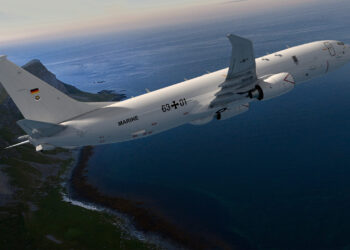US Navy,
USS PEARL HARBOR, At Sea: UNITAS 48-07 Pacific concluded off the coast of South America with a final conference at sea aboard USS Pearl Harbor (LSD 52) to assess the exercise and its results.
Navy representatives from Chile, Colombia, Peru and the United States gathered aboard Pearl Harbor on June 26 to review specific lessons learned from the exercise, analyze each ship’s performance and plan for future events.
“The high level of interoperability and coordination between ships helped accomplish the objectives in UNITAS Pacific phase,” said Commander, Destroyer Squadron (DESRON) 40 and Commander Task Group 40.0 Capt. Randy Snyder. “We tested the ability of multi-national forces by injecting realism in the scenarios, which brought challenges and allowed all units to work as a team.”
Ship commanding officers and their representatives arrived on board Pearl Harbor via helicopter and small boat, adding more opportunity for each ship’s crew to practice fundamental seamanship skills.
The primary emphasis for the annual UNITAS exercise is interoperability between participating nations. UNITAS brought a variety of ship classes with an embarked helicopter from Peru and a Peruvian submarine together for exercises that tested tactics and communications in an intense, week-long series of events.
“It was our pleasure to participate in the UNITAS exercises once again,” said Cmdr. Guillermo La Verde, commanding officer of Colombian frigate Independiente (FL 54). “Colombia has participated in all 48 UNITAS exercises through the years and just to have the chance to be part of this task force is an honor.”
“The final battle problem was a challenge. The participating units did an excellent job; good communications and tactics showed their professionalism,” said USS Mitscher (DDG 57) Commanding Officer Cmdr. Williams McKinley. “I thank everyone for their support, effort and cooperation throughout the events.”
One series of exercises closely examined during the wrap-up conference was simulated maritime interdiction operations (MIO) during which boarding teams from each ship rehearsed safe boarding and search techniques while at the same time being challenged by injected events such as personnel injuries, fire, flooding and engineering breakdowns. These events were a key part of the exercise’s scenario that added hands-on practice of vital skills.
“The MIO training events are a direct reflection of the things we are being tasked to do in real-world operations today,” said Cmdr. John Wilshusen, DESRON 40 chief staff officer.
“From coalition operations in the Persian Gulf, to counter-narcoterrorism efforts in the Caribbean and Eastern Pacific, to anti-piracy patrols off the coast of Somalia, U.S. Navy ships are at sea working alongside partner nation maritime forces to maintain law and order on the high seas. MIO is a task that all of us are required to do on a regular basis; the opportunity to rehearse those skills in the exercise environment is a great learning experience for all of us, from the command and control element down to the individual members of the boarding teams,” said Wilshusen.
UNITAS Pacific 48-07 participants included Chilean oiler Araucano (AO 53), Independiente, Peruvian frigate Palacios (FM 56), Peruvian submarine Arica (SS 36), U.S. Coast Guard cutter Mohawk (WMEC 913) and elements of Task Group 40.0, consisting of dock landing ship Pearl Harbor, guided missile destroyer Mitscher, and Chilean frigate CS Almirante Latorre (FFG 14).
Task Group 40.0 is currently deployed in support of Partnership of the Americas (POA) 2007, commanded by Snyder, Commander Destroyer Squadron 40. POA focuses on enhancing relations with regional partner nations through a variety of exercises and events at sea and ashore throughout South America and the Caribbean. This year’s POA deployment began in April and is expected to last through late summer.









